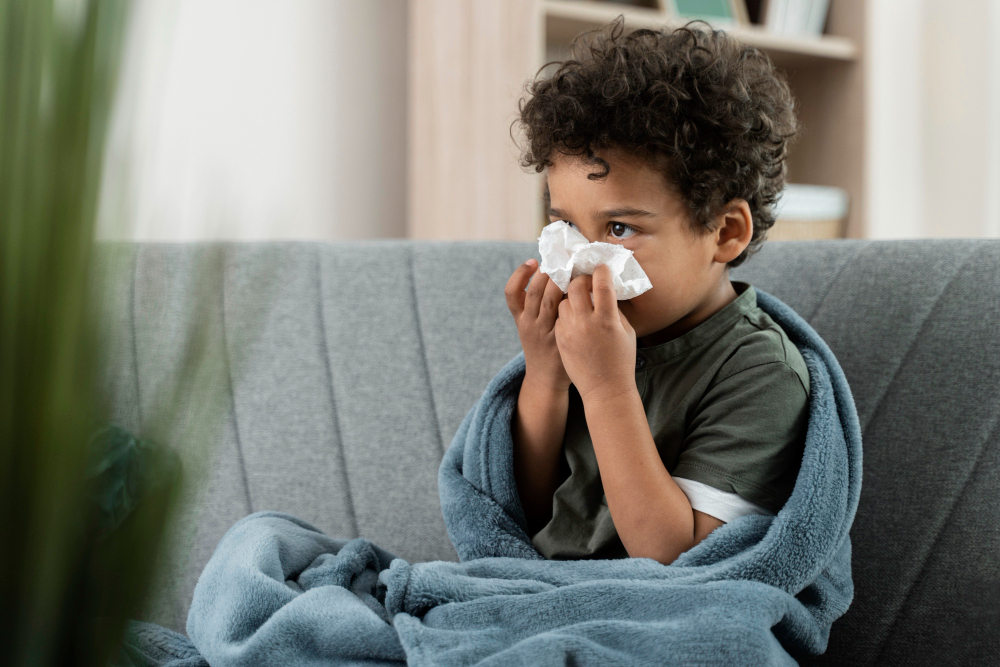Introduction: What Is the Flu in Children?
Flu in children is a common illness caused by the influenza virus. Many parents worry when their child gets sick, especially during flu season. The flu can spread quickly among kids, especially in schools and daycare centers. Although most children recover, some can get very sick. Knowing the signs and how to care for your child can help keep them safe.
Common Symptoms of Flu in Children
Children with the flu often feel unwell very quickly. While symptoms can vary, most kids show several of these signs:
Because flu symptoms can look like a cold, it is important to watch for sudden onset and high fever. If your child has trouble breathing, chest pain, or seems very sleepy, seek medical help right away.
Causes and Risk Factors
The flu in children is caused by the influenza virus. This virus spreads through droplets when someone coughs, sneezes, or talks. Kids can catch the flu by touching surfaces with the virus and then touching their mouth, nose, or eyes. Since children often play close together, the flu spreads easily in groups.
Some children are at higher risk for severe flu, including:
During flu season, which usually runs from fall to spring, the risk of catching the flu increases. In some areas, the season may start earlier or last longer.
Diagnosis: How Doctors Identify Flu in Children
Doctors often diagnose flu in children by looking at their symptoms and asking about recent exposure. Sometimes, they may use a quick test called a rapid influenza diagnostic test. This test uses a swab from the nose or throat and gives results in about 15 minutes. However, not all children need this test. In most cases, the doctor can tell if it is the flu based on symptoms and the time of year.
Treatment Options for Flu in Children
Most children with the flu get better at home with rest and care. However, some may need medicine or extra help. Treatment options include:
Always follow your doctor’s advice on medicines and care. If your child has trouble breathing, chest pain, or cannot keep fluids down, seek medical help right away.
Home Care and Lifestyle Guidance
While your child recovers from the flu, you can help them feel better at home. For example, keep them comfortable and watch for any changes. Here are some tips:
Because children can get tired easily, allow them to return to normal activities slowly. If symptoms get worse or last longer than a week, contact your doctor.
Prevention Tips: Protecting Your Child from the Flu
Preventing flu in children is important for their health and the health of others. The best way to prevent the flu is through vaccination. The CDC recommends a yearly flu shot for everyone 6 months and older. Vaccination helps protect your child and those around them.
Other ways to prevent the flu include:
During flu season, stay informed about outbreaks in your area. Some schools or communities may offer special flu clinics for children.
When to See a Doctor
Most children recover from the flu without problems. However, you should call your doctor if your child:
If you are unsure, it is always better to ask your doctor for advice. Early care can prevent serious problems.
Conclusion
Flu in children can be scary, but most kids recover with rest and care. Because the flu can cause serious illness in some children, prevention is key. Make sure your child gets a yearly flu shot and follows good hygiene habits. If your child shows flu symptoms or you have concerns, consult a pediatrician for personalized advice.

